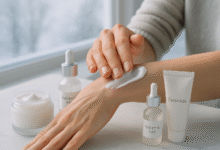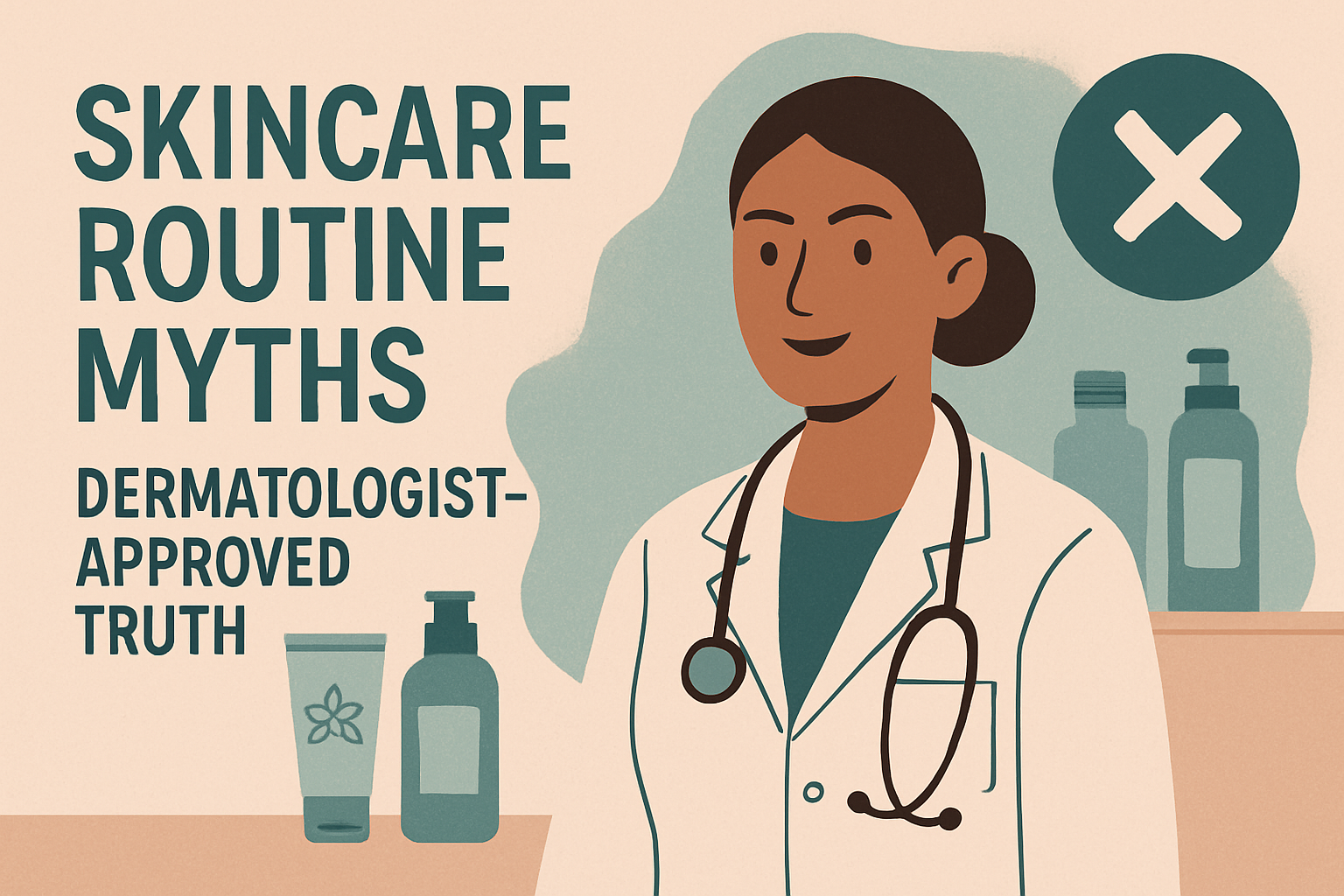Best Skincare for Dry Winter Skin: Your Complete Guide to Surviving Cold Weather
Discover the best skincare for dry winter skin with expert tips, essential ingredients like ceramides and hyaluronic acid, and proven routines to combat winter itch.

Look down at your hands right now. Are they dry? Cracked? Maybe even a little painful?
Welcome to winter. The season where your skin decides to stage a full rebellion against you, no matter how much lotion you slather on.
Here’s what’s actually happening: Water loss through your skin increases by about 25% during winter. That’s not a small change. Between the freezing air outside and the desert-dry heat inside, your skin is losing moisture faster than you can replace it. The result? Dry winter skin that feels tight, looks dull, and sometimes hurts.
But this guide isn’t just another list of products to buy. You’re going to learn why your winter skincare routine isn’t working, which ingredients actually matter, and how to fix the problem at its source. Whether you’re dealing with mild tightness or full-blown winter itch with cracking and bleeding, the solution is simpler than you think—you just need the right approach.
EXPLORE THE CONTENTS
What Winter Actually Does to Your Skin (And Why It Hurts)
Think of your skin as a brick wall. The cells are the bricks, and ceramides (natural fats) are the mortar holding everything together. This wall is your skin barrier, and its job is keeping good things in (moisture) and bad things out (bacteria, irritants, allergens).
Winter attacks this wall from both sides.
Outside, cold air has low humidity—there’s literally less water in the air to keep your skin hydrated. At low temperatures, your sebaceous glands produce fewer ceramides, and the glands themselves contract. Your wall starts crumbling because there’s not enough mortar.
-
Skincare Routine Myths: Dermatologist-Approved TruthAugust 8, 2025
Inside, your heater makes things worse. That cozy warmth? It’s sucking moisture out of the air and out of your skin. The temperature swings between indoors and outdoors stress your moisture barrier even more.
The damage shows up as:
- Tightness and discomfort (your barrier is dehydrated)
- Flaking and rough texture (dead skin cells aren’t shedding properly)
- Redness and sensitivity (your barrier can’t protect against irritants)
- Itching and inflammation (nerve endings are exposed)
- Cracking or bleeding (severe barrier breakdown)
When skin is dry, it’s harder for the barrier to protect you from the outside environment and may increase risk of skin infections. This isn’t just cosmetic—this is about your health.
The 4 Ingredients That Actually Work (And Why Most Products Fail)
Most winter skin care products fail because they only address part of the problem. You need ingredients that work together, not just one miracle worker. Here’s what your skin actually needs:
1. Ceramides: Rebuilding the Wall
Ceramides make up about 50% of your skin’s protective barrier, and winter depletes them faster than your body can make new ones.
When you apply ceramides topically, you’re literally giving your skin the building blocks it needs to repair itself. Look for products listing ceramide NP, AP, or EOP (sometimes labeled as ceramides 1, 3, and 6). These are identical to what your skin makes naturally.
Products with just one ceramide aren’t as effective. You want formulas with multiple types working together, ideally combined with cholesterol and fatty acids—the complete repair kit your barrier needs.
2. Hyaluronic Acid: The Hydration Powerhouse
Here’s a wild fact: Hyaluronic acid can hold up to 1000 times its weight in water. CeraVeFOREO That’s not marketing hype—that’s biochemistry.
Hyaluronic acid works as a humectant, pulling moisture from the air and deeper skin layers up to the surface. But here’s the trick most people miss: you need multiple molecular weights.
- Large molecules sit on your skin’s surface, creating an immediate plumping effect
- Medium molecules work in the middle layers for sustained hydration
- Small molecules penetrate deepest for long-term moisture retention
A good hyaluronic acid serum contains at least three different sizes. Anything less and you’re only getting partial results.
3. Occlusives: Sealing Everything In
Think of occlusives as a raincoat for your skin. They don’t add moisture—they prevent it from escaping.
The best occlusives for dry winter skin:
- Petroleum jelly (the gold standard, especially for severe dryness)
- Shea butter (rich and nourishing, great for body care)
- Squalane (lightweight and non-greasy, perfect for faces)
- Dimethicone (silicone-based, creates a breathable seal)
Most people skip this step, which is why their expensive serums don’t seem to work. You’re hydrating your skin, then letting all that moisture evaporate. You need to seal it in.
4. Supporting Cast: The Team Players
These ingredients aren’t optional—they’re what make everything else work better:
Niacinamide: Boosts ceramide production naturally and calms inflammation. A true multitasker.
Glycerin: Another humectant that’s gentle enough for the most sensitive skin and actually strengthens your barrier over time.
Vitamin B5 (Panthenol): Supports the production of ceramides and fatty acids while enhancing your skin’s ability to retain moisture.
Your Actually-Effective Winter Skincare Routine
Forget 10-step routines. When your skin is compromised, more products usually means more problems. Here’s what actually works:
Morning: Protect and Hydrate (4 Steps, 5 Minutes)
Step 1: Cleanse Without Stripping
Use gentle, fragrance-free soap or moisturizing non-soap cleansers, and restrict soap use to areas that are dirty.
Your face doesn’t get that dirty overnight. A splash of lukewarm water and a dime-sized amount of gentle cleanser is plenty. Save the deeper cleansing for evening.
What to avoid: Anything labeled “deep clean,” “clarifying,” or “for oily skin.” Those are too harsh right now.
Step 2: Apply Serum to Damp Skin
Pat your face mostly dry, leaving it slightly damp. Apply your hyaluronic acid serum immediately. The dampness helps the humectants pull moisture into your skin more effectively.
Use 3-4 drops. If you’re using more, you’re wasting product.
Step 3: Lock It In With Moisturizer
Choose a cream over lotion—cream-based moisturizers contain more oil and less water than lotions, making them more moisturizing.
Apply while your serum is still slightly damp. You want products with ceramides and occlusives listed in the first 5-7 ingredients. If they’re at the bottom of the list, there’s not enough to make a difference.
Step 4: SPF Is Not Negotiable
Even in winter, you should use sunscreen with a sun-protection factor of 15 or greater if you plan to be outdoors for prolonged periods.
UV damage weakens your moisture barrier, making dryness worse. Use SPF 30 minimum. If your moisturizer includes SPF, you can combine these steps—just make sure you’re using enough (about a quarter teaspoon for your face).
Evening: Repair and Restore (3-4 Steps, 5 Minutes)
Step 1: Gentle Cleansing (Actually Gentle)
Here’s where most people mess up. Hot water removes more of your skin’s natural oils, causing water from your skin to evaporate faster.
Use lukewarm water. Yes, hot showers feel amazing when you’re freezing. They’re also destroying your skin. Choose one or the other.
Step 2: Treatment (If You Use One)
If you use retinol or other active ingredients, winter is the time to dial back. Use them 2-3 nights a week instead of nightly. Your barrier needs all the help it can get—don’t stress it unnecessarily.
Step 3: Heavy-Duty Moisture
Apply moisturizer right after your bath or shower when skin is still wet to trap in moisture. This is the most important timing tip you’ll get.
At night, you can go heavier than morning. If your skin is very dry, add a few drops of facial oil before your cream, or use an ointment instead of cream.
Step 4: Don’t Ignore Lips and Hands
Your lips have no oil glands. Your hands wash constantly. Both need extra attention.
Apply a petroleum jelly-based lip balm and thick hand cream. For seriously damaged hands, slather on cream and wear cotton gloves to bed. It looks ridiculous. It works.
Beyond Products: Lifestyle Fixes That Actually Matter
You can buy every expensive cream on the market, but if you’re making these mistakes, you’re fighting a losing battle:
Fix Your Shower Habits
Limit baths and showers to five to ten minutes using warm water.
This is probably the hardest change to make, but it’s also the most effective. Twenty-minute hot showers are stripping away oils faster than any product can replace them.
Set a timer. Keep the water temperature just warm enough to be comfortable. Get in, wash up, get out. Save the long, relaxing soaks for when it’s humid outside.
After showering, pat dry—don’t rub. Then moisturize within five minutes while your skin is still damp. This timing isn’t a suggestion; it’s the difference between product that works and product that sits on the surface doing nothing.
Add Moisture to Your Air
A humidifier adds moisture back into the air, which can be especially helpful in cold and dry winter months. Put one in your bedroom and run it at night. If you work from home, get one for your office too. Aim for 30-50% humidity.
Clean it weekly or you’re just spraying mold spores around your room, which creates entirely different problems.
Protect Yourself Outside
Cover your face and use a petroleum-based lip balm to protect yourself from wind.
Wind is worse for your skin than cold temperatures. It physically strips moisture away and damages your barrier. Wear a scarf over your lower face, apply lip balm before going out, and don’t forget gloves.
Your hands are one of the most exposed areas and they have fewer oil glands than your face. They dry out faster and hurt more. Protect them.
When Your Skin Needs a Break: The Simplified Routine
Is your skin red, stinging, or reacting to everything? If your skin seems especially sensitive or irritated, consider simplifying your skincare routine temporarily.
Your skin barrier is damaged and needs time to heal. Strip your routine down to:
Morning: Gentle cleanser + simple moisturizer + SPF
Evening: Gentle cleanser + thick cream
That’s it. No serums. No actives. No toners. No exfoliants.
Drop these first:
- Retinoids and retinol
- AHAs and BHAs
- Vitamin C serums
- Anything with fragrance
- Products with alcohol in the first 5 ingredients
Wait until your skin feels comfortable for at least a week, then reintroduce products one at a time, waiting several days between each addition. This way, if something irritates your skin, you’ll know exactly what caused it.
Specific Problems, Specific Solutions
Eczema That Gets Worse Every Winter
If you have eczema, winter weather hits differently. The condition flares because your skin produces even fewer ceramides than normal, and the dryness triggers inflammation.
You need:
- Fragrance-free everything (even “unscented” products can have masking fragrances)
- Heavier occlusives like ointments instead of creams
- Possibly prescription treatments—talk to a dermatologist if OTC products aren’t cutting it
Lips That Won’t Stop Cracking
Your lips lack oil glands, making them sitting ducks for dry winter skin.
Stop licking them—saliva evaporates and makes things worse. Apply balm before going outside, after eating, and before bed. Look for petroleum jelly, lanolin (unless you’re allergic), or shea butter as the main ingredients.
If your lips are already cracked, apply a thick layer of balm before bed and try not to smile too much (kidding—sort of).
Hands That Crack and Bleed
It’s important to wash your hands frequently to prevent illnesses, but this worsens dryness. The solution isn’t washing less—it’s moisturizing more. Every. Single. Time. You. Wash.
Keep hand cream everywhere: every sink, your desk, your bag, your car. Use mild soap at home (save the antibacterial stuff for public restrooms). At night, go nuclear: thick ointment plus cotton or nitrile gloves while you sleep.
Yes, it’s annoying. It’s also the only thing that works for severe hand dryness.
The Mistakes Making Everything Worse
Using Summer Products in Winter
That gel moisturizer was perfect in July. It’s useless in January. Your skin’s needs change with the seasons—your products should too.
Over-Exfoliating
“But I need to remove the dead skin!” Yes, gently, occasionally. Not daily with harsh scrubs. You’re damaging your barrier and making the problem worse. Cut back to once a week with a gentle chemical exfoliant, or skip it entirely until your skin heals.
Skipping SPF Because It’s Cloudy
Winter sun can be dangerous to the skin, and UV damage can compromise skin health. UV rays penetrate clouds. Snow reflects them back at your face. Wear sunscreen.
Falling for “Unscented” Products
“Unscented” products can contain chemicals that neutralize or hide odors, which can irritate dry, sensitive skin. Dermatologists’ top tips for relieving dry skin Look for “fragrance-free” instead.
Waiting Until You’re Already Miserable
Start your winter skincare routine in October, not December when your skin is already damaged. Prevention is easier than repair.
How to Actually Shop for Winter Skincare
Marketing is designed to confuse you. Here’s how to cut through it:
Read the ingredient list, not the front label. If ceramides and hyaluronic acid aren’t in the first 7-10 ingredients, there’s probably not enough to matter.
Texture tells you a lot. If it feels like water, it’s not moisturizing enough for winter. You want something substantial—not necessarily heavy, but with body to it.
“Dermatologist tested” means something. “Dermatologist recommended” is marketing speak—anyone can recommend anything.
Non-comedogenic matters if you break out. If you don’t, focus on ingredients instead.
Simple is better than fancy. Five great ingredients beat 47 mediocre ones.
When to Stop Trying to Fix It Yourself
Most dry winter skin gets better with proper care. But sometimes you need professional help:
- You’ve been consistent with a good routine for 3-4 weeks and nothing has changed
- Your skin cracks or bleeds
- Itching keeps you awake at night
- You see signs of infection (oozing, excessive redness, warmth)
- Your skin suddenly changes in a way that concerns you
The American Academy of Dermatology can help you find a board-certified dermatologist. For research-backed information on skin health, Harvard Health is an excellent resource.
Conclusion:
Winter skin doesn’t have to be miserable. The solution isn’t complicated—you need the right ingredients (ceramides, hyaluronic acid, and occlusives), applied at the right time (immediately after washing), with the right habits (shorter lukewarm showers, consistent moisturizing, environmental protection).
Start before the cold weather hits, stay consistent even when you don’t see immediate results, and adjust based on how your skin responds. Most people see significant improvement within two weeks.
Your skin didn’t get this dry overnight, and it won’t heal overnight either. But with patience and the right approach, you can actually enjoy winter without wincing every time you look in the mirror or shake someone’s hand.







